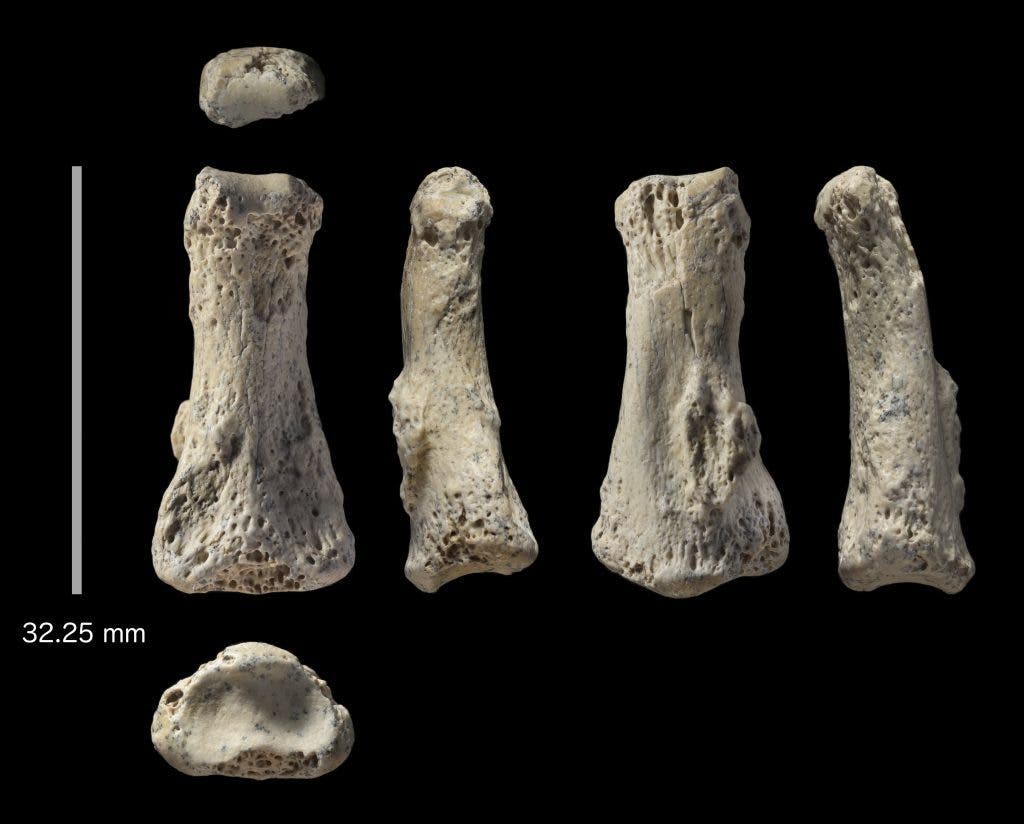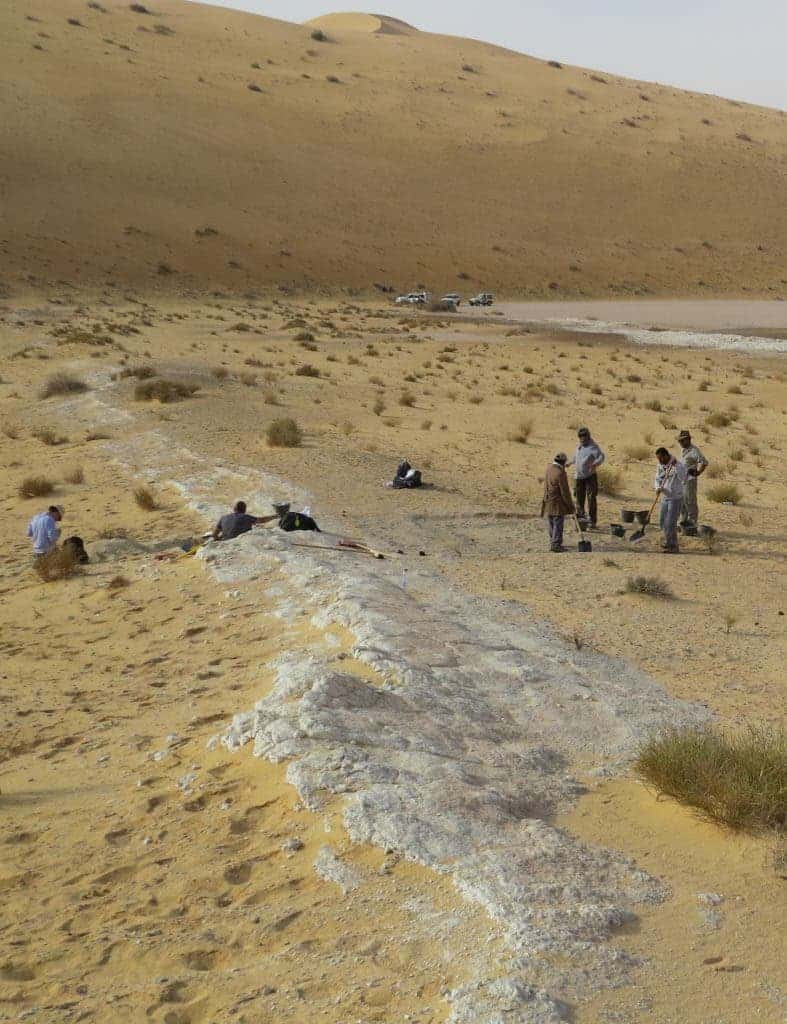
: Fossil finger bone of Homo sapiens from the Al Wusta site, Saudi Arabia. Credit: Ian Cartwright
A fossilized 90,000-year-old finger unearthed in Arabia is the earliest evidence of Homo Sapiens presence outside Africa and the Levant. Although today the region where the fossil was found is dry and rather inhospitable, the climate there used to be humid and monsoonal at the time the human the finger belonged to was still alive. As such, the findings suggest that not only were early humans more geographically dispersed than we used to think, they were also successfully adapting to new environments — a huge step forward in our species’ quest for global domination.
The Arabian Peninsula has long been considered to be far from the main stage of human evolution. This discovery firmly puts Arabia on the map as a key region for understanding our origins and expansion to the rest of the world. As fieldwork carries on, we continue to make remarkable discoveries in Saudi Arabia,” said Professor Michael Petraglia of the Max Planck Institute for the Science of Human History.
The team of international researchers led by the Max Planck Institute for the Science of Human History was conducting archaeological fieldwork in the Nefud Desert of Saudi Arabia when they came across the striking fossil. The site of Al Wusta where the researchers set camp used to house a freshwater lake, which attracted all sorts of creatures from hippopotamuses to tiny freshwater snails. Among the many animal fossils and human tools, the researchers also found a 3.2-cm-long fossil, which was immediately recognized as a human finger bone.
In order to properly identify the finger bone, researchers scanned it in 3-D then compared it to various other finger bones like recent modern humans, Neanderthals, but also species of primates. The analysis confirmed that the fossil belonged to an early human, marking the first ancient human fossil found in Arabia.
The age of the fossil was dated using a technique called uranium series dating, which involves etching microscopic holes in the fossil with a laser and measuring the ratio between tiny traces of radioactive elements. By this method, the researchers estimate the fossil is around 88,000 years old. Dates obtained from other animal fossils and sediments at the Al Wusta site converged to about the same age, approximately 90,000 years ago.

General view of the excavations at the Al Wusta site, Saudi Arabia. The ancient lakebed (in white) is surrounded by sand dunes of the Nefud Desert. Credit: Michael Petraglia
Although tiny and seemingly insignificant, this finger fossil might be an important piece of the complex jigsaw puzzle that is the story of human dispersal out of Africa. Traditionally, the expansion of our species out of the African continent is thought to have occurred in at least two phases. One early dispersal followed the Levantine corridor, alongside the eastern portion o the Mediterranean Basin. Findings in the Misliya Cave, Israel, suggest this dispersal occurred as early as 177,000 years ago. The second phase of modern human dispersal out of Africa is thought to have taken place as early as 65,000 years ago, partially overlapping with the Neanderthals’ presence in the Levant, which stretched from about 70,000 to 48,000 years ago. Oddly enough, researchers have identified fewer human fossils in this second phase than in the much earlier first phase. Instead, scientists studying the second phase have had to mostly rely on stone artifacts associations, chronometry, and other indirect evidence.
Where does the Al Wasta finger bone fit into all of this? Its age suggests that H. sapiens occupied areas outside of Africa and the Levant at a time between phase 1 (177,00-133,000 years ago) and the later phase 2 (~65,000 years ago). This supports the argument that there were never two different phases of dispersal, and instead African groups have diffused continuously across the Levantine-Arabian nexus to Eurasia as early as 177,000 years ago. What’s more, Al Wusta stone tools differ in detail and assemblage from the Levantine variety recovered from both early and late migrations.
“This discovery for the first time conclusively shows that early members of our species colonized an expansive region of southwest Asia and were not just restricted to the Levant. The ability of these early people to widely colonize this region casts doubt on long-held views that early dispersals out of Africa were localized and unsuccessful,” said lead author Dr. Huw Groucutt, of the University of Oxford and the Max Planck Institute for the Science of Human History.
The findings appeared in the journal Nature Ecology & Evolution.









